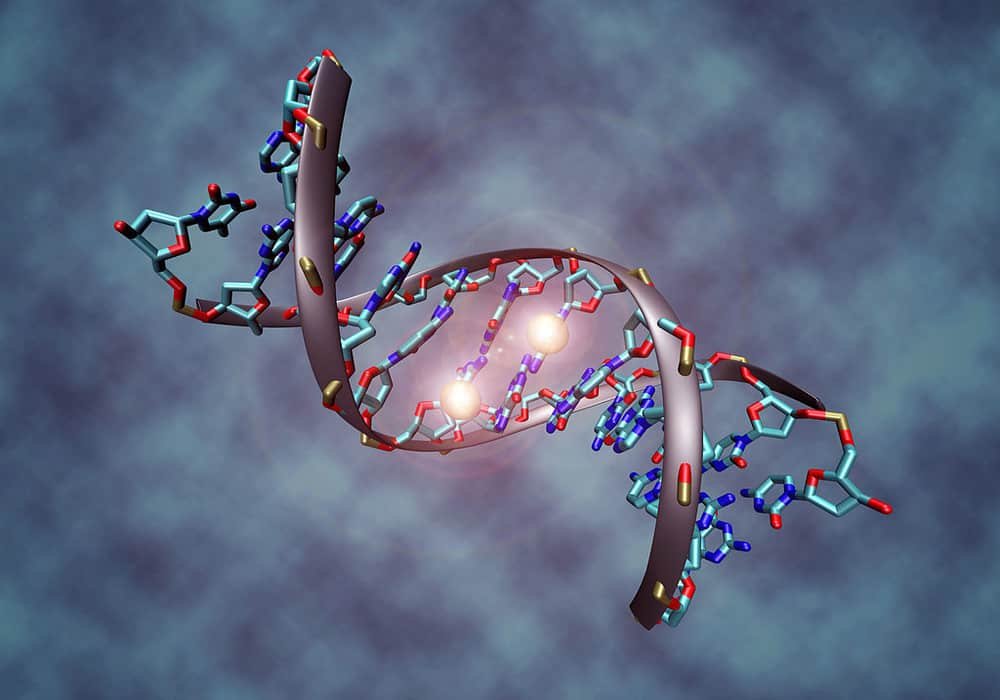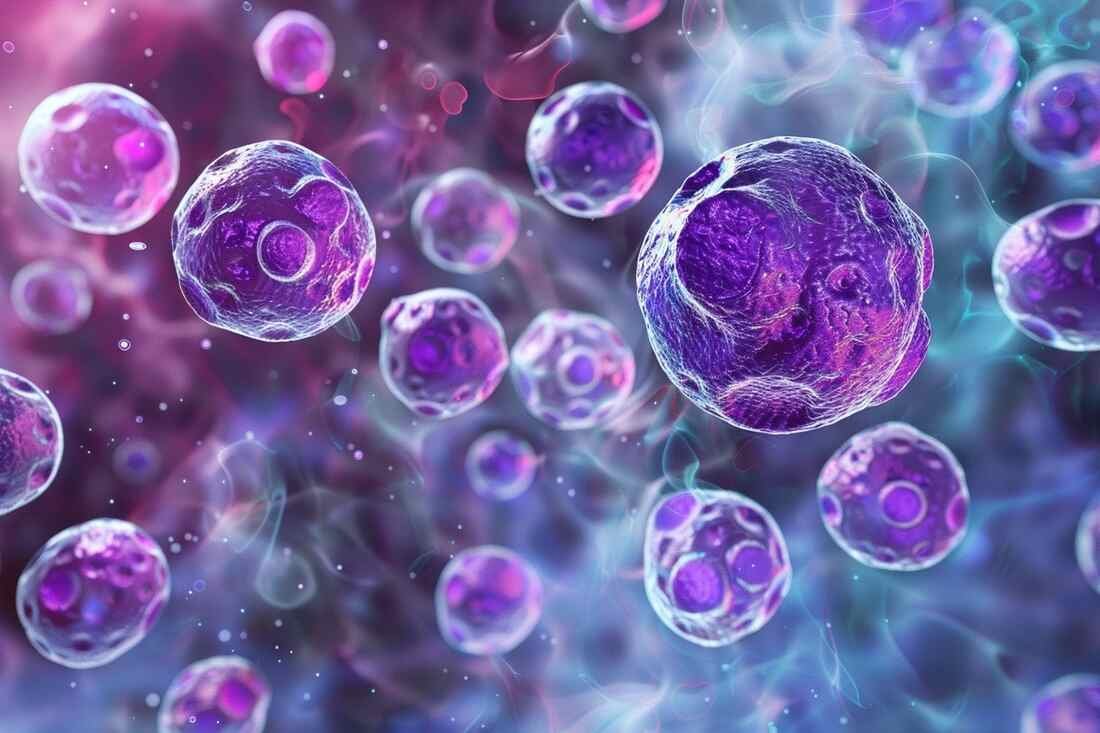Oncogenetics Test
Oncogenetics test is a test to find out whether you are at risk of developing or developing certain cancers.
We know that many diseases have a genetic part. From a blood test, a small amount of saliva or a strand of hair, a well-equipped and certified analytical laboratory can detect the presence, absence, or alteration of genes.
The principle of genetic testing consists of looking for genes in individuals whose mutations are known to increase the risk of cancer.
This test is considered when the risk of genetic cancer is very high.
Thus, it is possible to better diagnose diseases associated with genes (sometimes even before birth) or to predict their development. Genetic tests are also available which, in adults, help to assess the predisposition to certain familial pathologies.
ONCOGENETIC CONSULTATION, WHO IS IT FOR?
Generally recommended if:
- You have cancer and you have many cases of cancer in your family;
- You have no family history of cancer, but you have had cancer at an early age or have had several cancers simultaneously or in succession;
- A constitutional genetic change (inherited and present in all cells from birth) has been detected in one of your relatives (parents, brothers, sisters or children, for example);
- Testing for your tumor has determined that there are changes in genes that may be hereditary. Then it must be sought with another analysis, which is called constitutional. This analysis is performed using cells taken with a blood test or mouth swab.
How Oncogenetics Genes Work
Genetic testing is based on looking for a suspected mutation in a person carrying the disease, called an “index case”: if the applicant is sick, it is his or her own genetic inheritance being studied. If the applicant is not sick, tests should be performed on other family members who are sick. Therefore, the applicant should be able to talk about the process to his relatives to get their consent.
Genetic testing is done from a simple blood test. Searching for a suspected mutation is a long and painstaking process: analysis takes several months of work (average 6 months).
Example of genetic tests are available for some types of cancer, including:
- Breast cancer
- Colon cancer
- Kidney cancer
- Melanoma
- Ovarian cancer
- Pancreatic cancer
- Prostate cancer
- Sarcoma
- Stomach cancer (gastric)
- Thyroid cancer
Oncogenetics Test Results
When a cancer predisposing mutation is found, an increased risk of cancer is established. These mutations can be found in other family members. This exam is easier to administer and therefore faster than the first exam: it generally takes only a few weeks.
If no mutation can be detected, the test result is said to be “undetermined” because it cannot be concluded from this that there is no hereditary risk. Indeed, available genetic tests do not detect 100% of mutations.
In addition, some of the mutations involved in hereditary predisposition to cancer are unknown. In such a situation, if the estimated risk of the family tree is low, the results are convincing. If the history of cancer is important, the doctor will suggest increased surveillance (to prevent the impact of an unidentified mutation) or repeat genetic testing on other patients in the family.
At every step of the process, the patient remains the decision maker. His written consent was obtained prior to any analysis. The purpose of this formality was to let them know that he was free to stop the exam at any time. Whether he postpones the investigation or chooses to find out more through genetic testing, the decision rests with them.
Tumor Markers: What They Are and How They’re Used to Diagnose and Monitor Cancer
After Oncogenetics Test
When a hereditary predisposition to cancer is shown in a family, doctors offer customized monitoring for each individual: depending on the case, prophylactic monitoring or management may be offered.
Personalized supervision
Family members who do not carry the mutation are not at higher risk of cancer of genetic origin. Their cancer risk is the same as the rest of the general population. They should therefore follow the recommendations addressed to the general public for cancer prevention and screening.
Family members who carry the mutation benefit from a multidisciplinary opinion on what to do in the years to come (eg: breast monitoring and surgical ovarian prophylaxis for women carrying the BRCA1 gene anomaly, colic, and uterine monitoring in Lynch syndrome). In general, surveillance is based on a schedule in which screening examinations are anticipated and pooled, compared to those used for populations without excess risk. Sometimes additional checks can complement this long-term monitoring schedule.
GENES: WHERE AND WHAT IS IT USED?
1. IN THE HEART OF THE CELL, THE CHROMOSOMES
Organisms, plants or animals, are made up of tiny elements: cells. The human body is made up of several billion cells of various types (skin, bone, blood cells, for example). At the heart of the cell, the nucleus contains our 46 chromosomes (23 pairs each with a chromosome of paternal origin and a chromosome of maternal origin). Chromosomes correspond to our genetic makeup.
2. IN CHROMOSOMES, GENES
Each chromosome consists of a DNA molecule (for Deoxyribonucleic Acid) on which our genes are written. Therefore, genes are segments of DNA. It contains precise instructions that contribute to the function of each cell.
Humans have about 20,000 genes that contain information about their identity, enabling them to pass their characteristics on to their offspring and make their cells work.
3. GENOME AND GENETIC VARIATION
The genome represents all the genetic information of a person. The genomes of two people are, on average, 99% identical. So there is only 1% difference between them. This difference is called variation.
These variations, together with one’s interaction with one’s environment, are at the root of the uniqueness of each human being. Genetic variations can have consequences on the development of certain diseases.
Information: Cleverly Smart is not a substitute for a doctor. Always consult a doctor to treat your health condition.
Sources: PinterPandai, Bioscience Institute, Gustave Roussy, Centre Léon Bérard, American Society of Clinical Oncology (ASCO)
Photo credit: Christoph Bock, Max Planck Institute for Informatics / Wikimedia Commons
Photo explanations: in this image shows a DNA molecule that is methylated on both strands on the center cytosine. DNA methylation plays an important role for epigenetic gene regulation in development and cancer. [Details: The picture shows the crystal structure of a short DNA helix with sequence “accgcCGgcgcc”, which is methylated on both strands at the center cytosine. The structure was taken from the Protein Data Bank (accession number 329D), rendering was performed with VMD (Visual Molecular Dynamics rendering program) and post-processing was done in Photoshop.
Chemotherapy Drugs Combinations | Chemo Medications: Understanding Medications for Cancer Treatment



